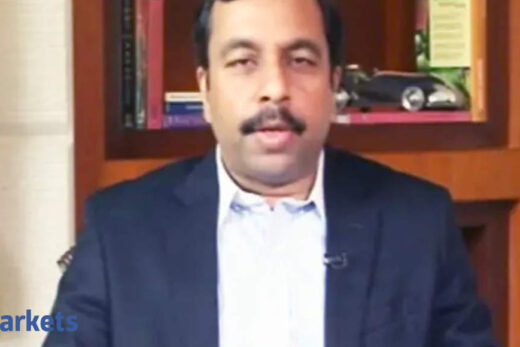The repo rate and reverse repo rate remain at 4% and 3.35%, respectively, after the announcement. It was expected that RBI would hold the repo rate steady in order to keep a lid on the yields of government securities which are likely to face upward pressure due to higher borrowings planned by the government in FY 2021-22.
As per Bloomberg report, “India’s central bank is under pressure to step in to keep yields in check after the government surprised bond markets with a bigger-than-expected borrowing plan. That puts the burden on Governor Shaktikanta Das to calm the bond traders when he meets to decide policy on Friday. He’s already had to assuage them that a recent measure to mop up excess liquidity isn’t a step toward changing the RBI’s accommodative policy and the central bank has rejected bids at two auctions of benchmark debt after investors sought higher yields.”
With no change in the repo rate and reverse repo rate by the central bank, the likelihood of an immediate reduction in borrowers’ loan equated monthly instalments (EMIs) is less. On the other hand, no change in policy rates means good news for fixed deposit (FD) investors as banks may not cut interest rates on FDs any further.
Here’s what FD investors and borrowers can do after today’s announcement.
A sigh of relief for debt investors
In the last couple of months, some banks have started increasing interest rates of longer-term FDs. For example, in December 2020, Canara Bank raised the interest rate on FDs with tenures of 2 to 10 years. With effect from January 8, 2021, SBI has hiked the interest on. FDs with tenure of more than one-year but less than two years. SBI has not cut the interest rate on FDs since September 2020. This is after RBI kept key policy rates unchanged since its August 2020 bi-monthly monetary policy.
However, conservative investors should look for alternatives to bank FDs if they want higher returns. As per financial planners, mutual fund investors should get ready for low returns from debt mutual fund schemes as the rally in the returns is coming to an end. Read on to know what debt mutual fund investors should do.
Apart from FDs and debt mutual funds, investors have the option of investing in small savings schemes. The government has kept interest rates on these schemes unchanged in the last quarterly review as on December 31, 2020.
Also Read: Latest post office schemes interest rates
As per a Bloomberg report, Budget 2021 has shown massive reliance on small savings schemes to fund fiscal deficit for the FY 2020-21. Thus, it is likely that government may not cut interest rates on these schemes to ensure that they remain attractive for investors.
Also read: Modi govt’s reliance on small savings schemes
Other alternatives to FDs are Pradhan Mantri Vaya Vandana Yojana (PMVVY) and RBI floating rate savings bonds, 2020. Do keep in mind that PMVVY offers fixed interest rate throughout its tenure, whereas the interest rate on RBI’s floating bonds is reset every six months.; The second reset date of interest rate of RBI floating rate savings bonds is July 1, 2021.
Existing home loan borrowers
A) Loans linked to external benchmark
Borrowers whose home loans are linked to an external benchmark are likely to pay the same EMI for now unless their bank reduces its margin or spread on the loan interest rates. On the other hand, if your bank raises the risk premium on your loan account, then the EMI on your home loan is likely to increase.
B) Loans linked to MCLR
A bank’s marginal cost-based lending rate (MCLR) is determined by both internal factors such as cost of funds and external factors such as repo rate etc. Thus, any further change in the MCLR will now depend on bank-specific internal factors like cost of funds etc.
Usually, home loans linked to MCLR come with a reset period of either one-year or six months. Thus, even if your bank reduces its MCLR now, the reduction will result in lower EMIs only when the reset date of your home loan arrives. On the reset date, your future EMIs will be calculated based on the interest rate (MCLR + spread) prevailing on that date (i.e., reset date).
In September 2020, SBI announced, via its official Twitter handle, that it had reduced the MCLR reset frequency from one year to six months for loans given by it. This means that any policy rate changes will be transmitted faster to SBI’s home loan borrowers.
MCLR linked loan borrowers also have the option to switch to a loan linked to an external benchmark. The switch can be done by paying an administrative fee as set by the bank.
C. With loans linked to base rate or BPLR
Borrowers whose home loan is linked to the base rate or Benchmark Prime Lending Rate (BPLR) should consider switching to an external benchmark-based loan. The new lending rate regime offers better transmission of RBI policy rates in comparison with the base rate and BPLR rate-linked loans, as per financial planners and industry experts.
With effect from December 10, 2020, SBI’s BPLR is at 12.05 % and base rate is 7.30 %. However, the bank’s repo rate-linked loan interest rate starts from 7 % (for a male, salaried borrower).
New borrowers
For new borrowers, now appears to be a good time to take a home loan as the interest rates are low. However, with the on-going pandemic there are other factors you should consider as well. For this read: Answer these 8 questions before taking home loan
Further, to get the lowest interest rate do check and compare the margin and risk premium charged by banks over and above the external benchmark.
Do keep in mind that not all banks have chosen the repo rate as an external benchmark. Some banks have linked the interest rate on loans to certificate of deposit rate, treasury bills interest rates etc. Remember, as per RBI guidelines, loan interest rates can be linked to any of these external benchmarks:
(a) RBI’s repo rate
(b) Govt of India 3-month Treasury bill yield published by Financial Benchmarks India Pvt. Ltd
(c) Govt of India 6-month Treasury bill yield published by Financial Benchmarks India Pvt. Ltd
(d) Any other benchmark market interest rate published by Financial Benchmarks India Pvt. Ltd
New borrowers need to keep in mind that external benchmark-linked interest rates are likely to be more volatile compared with MCLR linked rates. This is because changes in the external benchmark – both increases as well as decreases — are transmitted faster than via interest rates linked to MCLR.
New borrowers (if eligible) can also apply for home loan under Pradhan Mantri Awas Yojana (PMAY). It is a credit linked subsidy scheme where middle income group – I (MIG -I) with income between Rs 6 lakh and Rs 12 lakh can avail interest subsidy of 4 % and middle income group – II (MIG -II) with income between Rs 12 lakh and 18 lakh can get interest subsidy of 3 % under the scheme. The last date to avail the benefit under the scheme is March 31, 2021.



